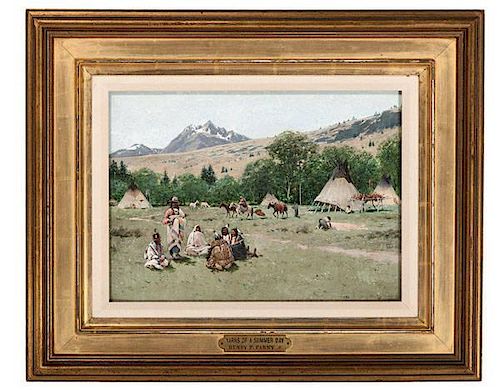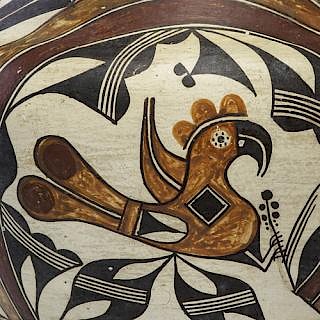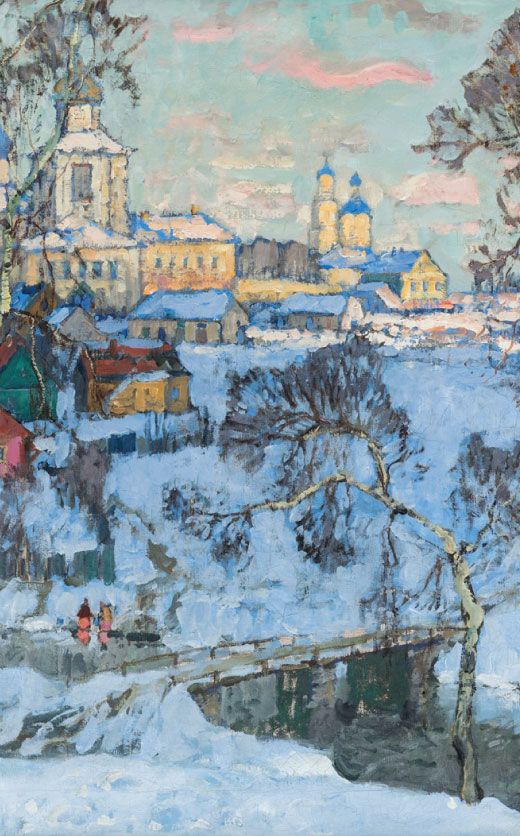Henry Farny (American, 1847-1916) Gouache on Paper
About Seller
6270 Este Ave.
Cincinnati , OH 45232
United States
With offices in Cincinnati, Cleveland and Denver, Cowan’s holds over 40 auctions each year, with annual sales exceeding $16M. We reach buyers around the globe, and take pride in our reputation for integrity, customer service and great results. A full-service house, Cowan’s Auctions specializes in Am...Read more
Two ways to bid:
- Leave a max absentee bid and the platform will bid on your behalf up to your maximum bid during the live auction.
- Bid live during the auction and your bids will be submitted real-time to the auctioneer.
Bid Increments
| Price | Bid Increment |
|---|---|
| $0 | $25 |
| $500 | $50 |
| $1,000 | $100 |
| $2,000 | $250 |
| $5,000 | $500 |
| $10,000 | $1,000 |
| $20,000 | $2,500 |
| $50,000 | $5,000 |
| $100,000 | $10,000 |
About Auction
Sep 26, 2014 - Sep 27, 2014
Cowan's Auctions dawnie@cowans.com
- Lot Description
Yarns of a Summer Daysigned, dated, and artist's bullseye monogram, lower left(sight) 11.25 x 15.75 in.(with Closson's Gallery, Cincinnati frame) 19 x 23 in.1894LITERATUREBaltzer, Charles. 1975. Catalog for the exhibition "Henry Farny", Indian Hill Historical Museum Association. Plate 76.Carter, Denny T. Henry Farny; 1978. Watson-Guptill Publications, NY, NY. Plates frontispiece, pg. 35, also illustrated pg. 90.EXHIBITEDIndian Hill Historical Museum Association, Cincinnati, OH. 1975.In its vibrant and sweeping view of the Plains, its meticulous brushwork in gouache, and numerous figures going about their daily lives-- uninterrupted-- representative of the nostalgia of the American West that captured the interest of so many in the late 19th century, Yarns of a Summer Day is one of the finest examples of Henry Farny's painting that has ever passed through Cowan's salesroom. While the work is not monumental in size (so few of Farny's paintings were), it contains every element that made Farny one of the most highly regarded artist's of the American West during the 19th and early 20th centuries.Unlike his most notable contemporaries, Charles Russell (1864-1926) and Frederic Remington (1861-1909), Farny usually portrayed the American Indian in a peaceful, idyllic setting, rather than in the climactic moments of conflict between Indians and the whites pushing West. His work was reminiscent of a time when the inhabitants of the American West were undisturbed. Instead, Farny was subtle in his narratives, and any sense of conflict was often implied in a title, rather than overtly illustrated. It is in this vein that Yarns of a Summer Day is titled, suggesting a peaceful time, filled with daily activity.Yarns of a Summer Day was executed at the height of Farny's career in 1894. During that Fall, he made his final trip West, on an invitation from General Nelson Miles (1839-1925) to Fort Sill, where the famed Apache Geronimo was held prisoner. This work was probably painted before Farny made his way to Oklahoma, perhaps in the summer of 1894, where he was just off of an exhibit at the Chicago World's Fair in the previous year, which greatly contributed to his national popularity.Farny had seen firsthand in his travels to the West that American Indian culture was fading quickly. But he realized that viewers were interested in that culture, and his attempts to capture it from the view of the past were hungrily consumed by collectors back East. In Henry Farny Paints the Far West (2007), Susan Labry Meyn perhaps puts these idyllic scenes best:By the time that Farny made his first trip West in 1881, the Indian people of the entire Great Plains region, from Texas into Canada, were already greatly impoverished, culturally as well as economically. These Native Americans had endured nearly a century of pernicious federal policy and more than forty years of punishing war with the U.S. military. The government's objective was to either civilize or exterminate these proud and brave warriors.The Indian story that Farny usually chose to tell reflected the lifeways of these Indians during the glorious and earlier days of traditional Plains life, when they had charged across the grasslands hunting buffalo prior to their confinement on remote reservations. (pg. 37).This painting was purchased directly from the artist, and descended in the same family until the present day. It has never been offered for sale before.
- Shipping Info
-
SHIPPING. At the request of the buyer, Cowan's will authorize the shipment of purchased items. Shipments usually occur within two weeks after payment has been received. Shipment is generally made via UPS Ground service. Unless buyer gives special instructions, the shipping method shall be at the sole discretion of Cowan's Auctions, Inc.. Cowan's is in no way responsible for the acts or omissions of independent handlers, packers or shippers of purchased items or for any loss, damage or delay from the packing or shipping of any property.
-
- Buyer's Premium



 EUR
EUR CAD
CAD AUD
AUD GBP
GBP MXN
MXN HKD
HKD CNY
CNY MYR
MYR SEK
SEK SGD
SGD CHF
CHF THB
THB










